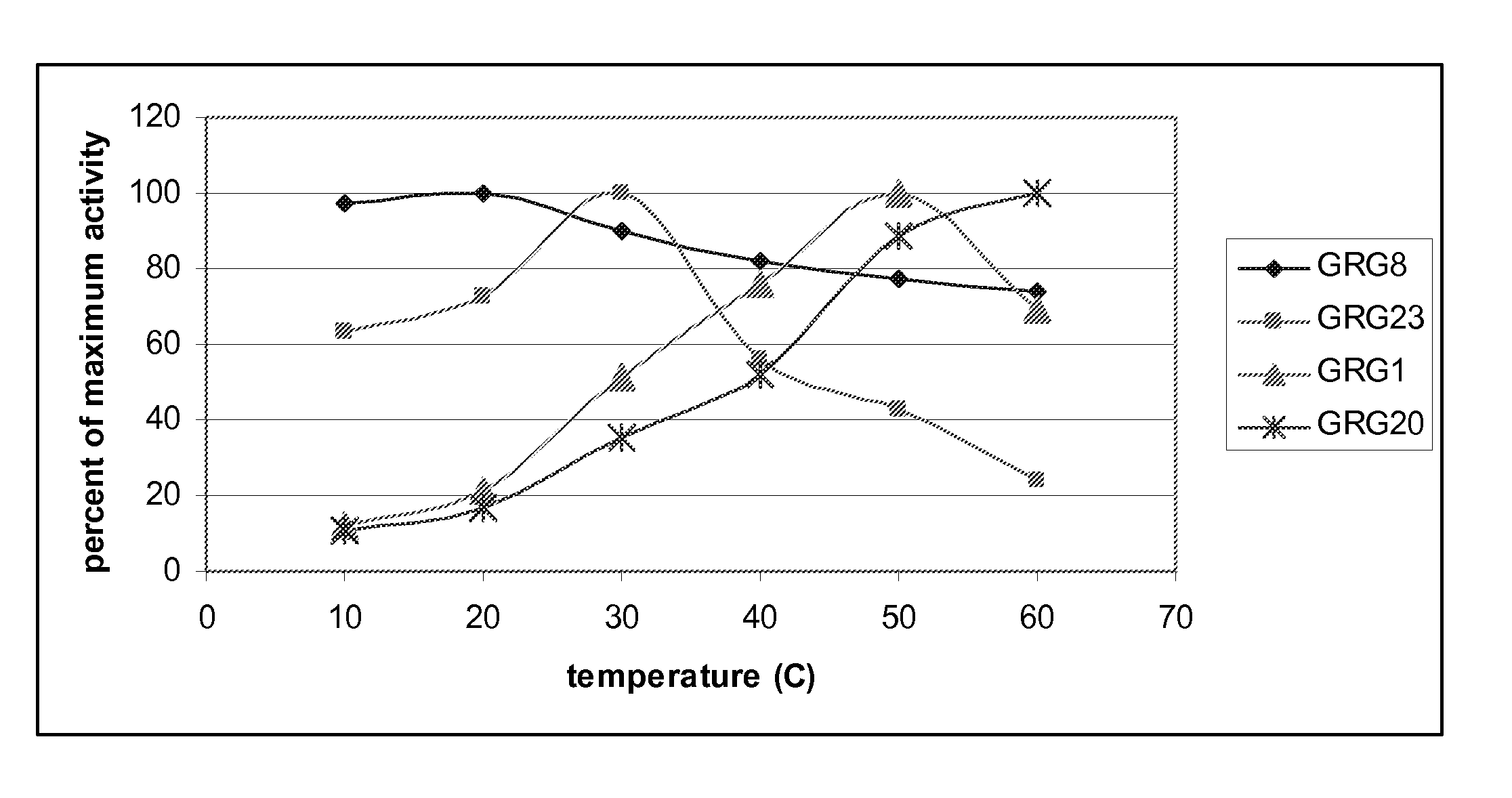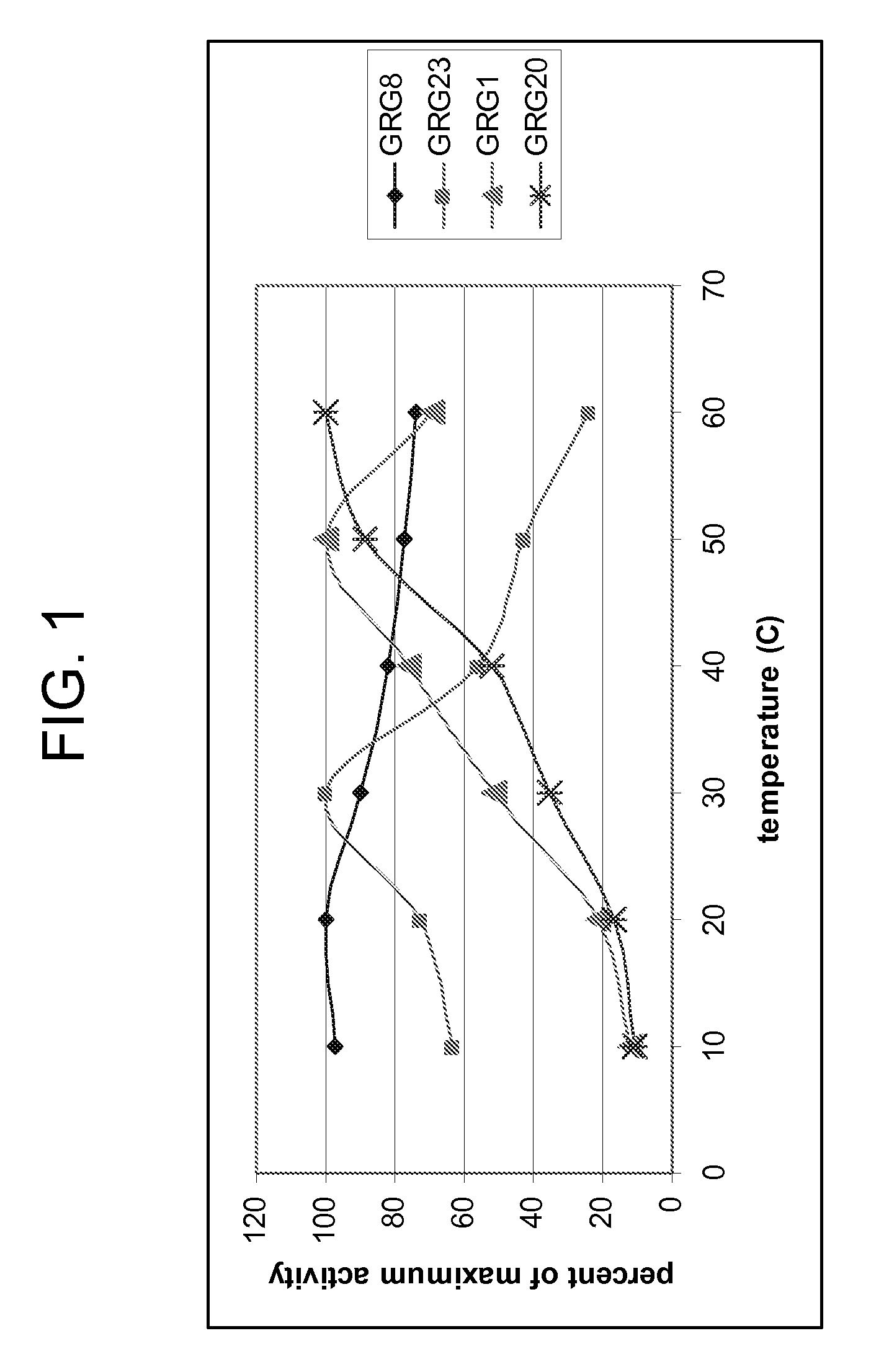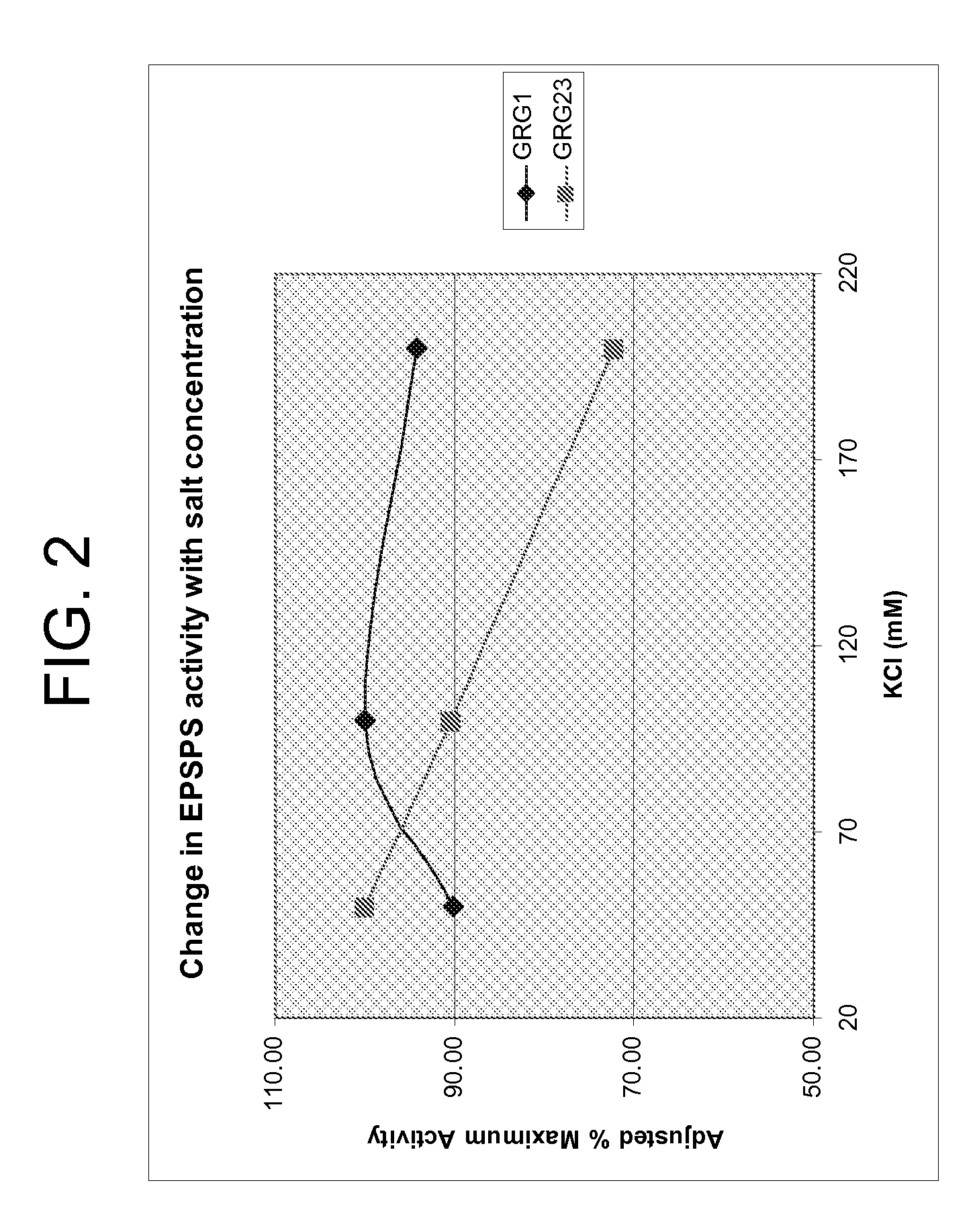Methods and compositions for improved enzyme activity in transgenic plants
a technology of enzyme activity and transgenic plants, applied in the field of molecular plant biology, can solve the problems of reducing yield, plant suffering, and cp4 of the synthase enzyme not fully tolerant of glyphosate, and achieve the effects of improving enzyme activity, improving enzyme activity, and improving enzyme activity
- Summary
- Abstract
- Description
- Claims
- Application Information
AI Technical Summary
Benefits of technology
Problems solved by technology
Method used
Image
Examples
example 1
EPSP Synthases for Glyphosate Resistance
[0116] The DNA coding sequence and the amino acid sequence of the grg8 open reading frame are provided in U.S. Provisional Patent Application No. 60 / 640,195, filed Dec. 29, 2004, and set forth as SEQ ID NO:1 and SEQ ID NO:2 of this application, respectively.
[0117] The DNA coding sequence and the amino acid sequence of the grg23 open reading frame are provided in U.S. Provisional Patent Application No. 60 / 741,166, filed Dec. 1, 2005, and set forth as SEQ ID NO:3 and SEQ ID NO:4 of this application, respectively.
[0118] The DNA coding sequence and amino acid sequence of the grg1 open reading frame are provided in U.S. Provisional patent application Ser. No. 10 / 739,610, filed Dec. 18, 2003, and set forth as SEQ ID NO:5 and SEQ ID NO:6 of this application, respectively.
[0119] The DNA coding sequence and amino acid sequence of the grg20 open reading frame are set forth as SEQ ID NO:7 and SEQ ID NO:8 of this application, respectively. This EPSPS ...
example 2
EPSP Synthase Activity for Temperature Optima Determination
[0120] Individual glyphosate-resistant EPSP synthase enzymes were overexpressed in E. coli and purified to homogeneity by standard methods. To measure enzyme activity, each enzyme was diluted to an appropriate assay concentration in buffer containing HEPES (50 mM, pH 7) and 50 mM KCl, and then incubated for 15 minutes at 10, 20, 30, 40, 50 or 60° C. Following incubation, each enzyme was heated to 90° C. for 1 minute to denature the enzyme, and then cooled to 4° C. The phosphate generated by each reaction was then added to a second assay containing inosine, purine nucleoside phosphorylase, xanthine oxidase, horseradish peroxidase, and the fluorescent substrate Amplex Red (see U.S. Provisional Patent Application No. 60 / 741,166, filed Dec. 1, 2005). Following incubation for 15 minutes at room temperature, fluorescent product was quantified using a Gemini XPS spectrofluorometer (Molecular Devices Corporation of Sunnyvale, Calif...
example 3
EPSP Synthase Activity for pH Optimum Determination
[0121] Individual glyphosate-resistant EPSP synthase enzymes were overexpressed in E. coli and purified to homogeneity by standard methods. To measure enzyme activity, each enzyme was diluted to an appropriate assay concentration in buffer containing HEPES (50 mM, pH 7) and 50 mM KCl, and then incubated for 15 minutes with buffers calibrated to pHs ranging from pH 6.0 to pH 8.0. Following incubation, each enzyme was heated to 90° C. for 1 minute to denature the enzyme, and then cooled to 4° C. The phosphate generated by each reaction was then added to a second assay containing inosine, purine nucleoside phosphorylase, xanthine oxidase, horseradish peroxidase, and the fluorescent substrate Amplex Red (see U.S. Provisional Patent Application No. 60 / 741,166, filed Dec. 1, 2005). Following incubation for 15 minutes at room temperature, fluorescent product was quantified using a Gemini XPS spectrofluorometer (Molecular Devices Corporati...
PUM
| Property | Measurement | Unit |
|---|---|---|
| temperature | aaaaa | aaaaa |
| temperature | aaaaa | aaaaa |
| temperature | aaaaa | aaaaa |
Abstract
Description
Claims
Application Information
 Login to View More
Login to View More - R&D
- Intellectual Property
- Life Sciences
- Materials
- Tech Scout
- Unparalleled Data Quality
- Higher Quality Content
- 60% Fewer Hallucinations
Browse by: Latest US Patents, China's latest patents, Technical Efficacy Thesaurus, Application Domain, Technology Topic, Popular Technical Reports.
© 2025 PatSnap. All rights reserved.Legal|Privacy policy|Modern Slavery Act Transparency Statement|Sitemap|About US| Contact US: help@patsnap.com



